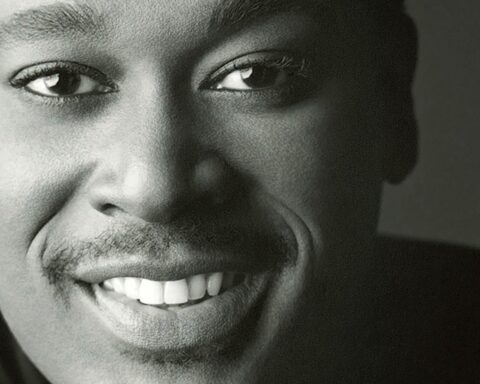Helmut Newton: The Bad and the Beautiful
(USA, 93 min.)
Dir. Gero von Boehm
Only a photographer as daring as Helmut Newton could make roast chicken look sexy. The man sure knew how to photograph a pair of drumsticks. Before Newton set some miniature high heels on chicken legs for Vogue magazine in 2003, he established himself with fierce portraits of women that celebrated their strength through provocative and often erotic images. His other (and perhaps more celebrated) chicken photo (pictured above) features a woman’s hands, clad in Bulgari jewels, butchering a bird with their elegant might. His photographs frequently evoke an interplay between beauty and disorientation to inspire deeper conversations about the characters and stories within them. Birds of a feather should flock to the new documentary about his iconic oeuvre.
Helmut Newton: The Bad and the Beautiful celebrates the life and work of the late German photographer. In true photo doc fashion, The Bad and the Beautiful is a cinematic tour through a gallery. One outstanding photograph dissolves to another, showcasing juicy chicken legs alongside the enigmatic allure of Grace Jones or the hypnotic power of Isabella Rossellini. The film features a dazzling array of Newton’s portraits with many of his surviving subjects giving voice to his art. As with any tour through a gallery, the portraits might inspire reactions ranging from awe to disgust depending on one’s tastes. However, Gero von Boehm’s film is also a provocative essay on the role of context in conversations about art.
The Bad and the Beautiful directly confronts the legacy of Newton’s work that contemporary viewers might find troubling. One could call Helmut Newton’s portfolio gross, demeaning, and misogynistic. People do, most notably Susan Sontag in an archival excerpt in the film. However, the women whom Newton photographed tell a different story: one of feeling empowered by posing in portraits that depicted women as both strong and sexy. They argue that Newton’s work challenged the status quo for gender roles and pushed the envelope for bold art.
For example, Grace Jones recalls her tumultuous history with Newton. She laughs during an interview while remembering how Newton dismissed her because he thought her breasts were too small; however, Jones says he summoned her for subsequent auditions, always in awe of the face in the headshot, but dismayed by the chest that failed to measure up to his bustier ambitions. Eventually, some of Newton’s most iconic shoots would feature Jones alongside her equally muscular flame Dolph Lundgren. Newton’s nude photography of Jones and Lundgen, shown exquisitely in the film, creates an interplay of physical strength and sexual authority, affording Jones the same power as her male partner. The contrasts within the black and white photography accentuate Jones’s status as a strong Black woman and equalises the racial dynamic within the image. Rather than see the casting process and the shoots as evidence of everyday sexism, casual racism, or exoticism as others charge, Jones comes alive while reliving the feeling of agency the shoot afforded her.
Similarly, models like Nadja Auermann challenge the criticisms that Newton’s work is offensive or politically incorrect. Perhaps the most engaging of the film’s interviewees, Auermann recalls being the subject of some of Newton’s most controversial photos. For example, she notes a shot in which she straddled a swan in bed. Auermann says it drew concerns for animal cruelty, misogyny, and bestiality from onlookers who didn’t know that the swan was fake or that, more significantly, Newton’s photo adapted the Greek myth of Leda and the Swan. Likewise, Auermann defends a series in which Newton showcased the objectification of women in high heels by shooting them on crutches or in wheelchairs. While one might not argue if people with disabilities find the portraits problematic, but one must also consider Auermann’s take that the photos illustrated how conventions of classical beauty could be debilitating. The film encourages audiences to ask questions about the context in which art is produced and make informed opinions about the work. One doesn’t have to agree with Newton’s execution, but the intentions of the artist should be part of the conversation.
In this fashion, von Boehm draws upon Newton’s background as a Jewish man coming of age in Nazi Germany. Archival excerpts with Newton speak to the feelings of dehumanization he experienced, as well as the power of representation that Nazi propaganda instilled within him. The film speaks to the influence of Leni Riefenstahl on Newton’s aesthetic, a perhaps surprising element of the doc as the Jewish photographer’s work reflects the iconography of the Nazi filmmaker. Riefenstahl’s portraiture of strong and muscular Nazi women endures in Newton’s photography as he subverts the elements of fear and might to empower his subjects without threatening others. The film invites a fascinating conversation about the power of representation in all its complexity.
The film largely lets the women of Newton’s photographs do the talking, which adds to the sentiment that work from the past needs its fair context in today’s conversations. Isabella Rossellini energetically recalls her shoots with David Lynch in which Newton asked her to yield to Lynch’s authority to inspire an image about the power of the auteur. Rossellini compares posing for Newton to creating a character in film, saying that the image she embodies in a photo ultimately represents an idea, rather than her true self. Similarly, actresses like Charlotte Rampling intellectualise Newton’s photography, also recalling its empowering appeal, while editors like Anna Wintour (hiding behind a huge pair of sunglasses) speak to Newton’s professionalism.
The conversations are admittedly repetitive, but the interviewees all have insights to offer. They also all acknowledge that Helmut Newton was something of a pervert. One can’t argue with that point, but the complexity of Newton’s character only adds to the stimulating essay on the artist and his provocative creations.
Helmut Newton: The Bad and the Beautiful is now playing in select cinemas and in select virtual cinemas including Hot Docs Ted Rogers Cinema











